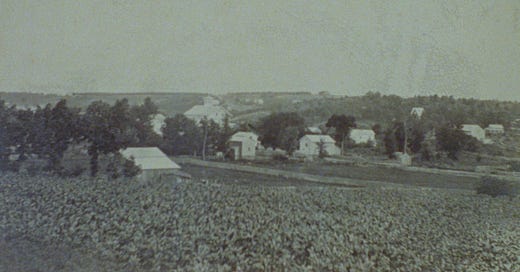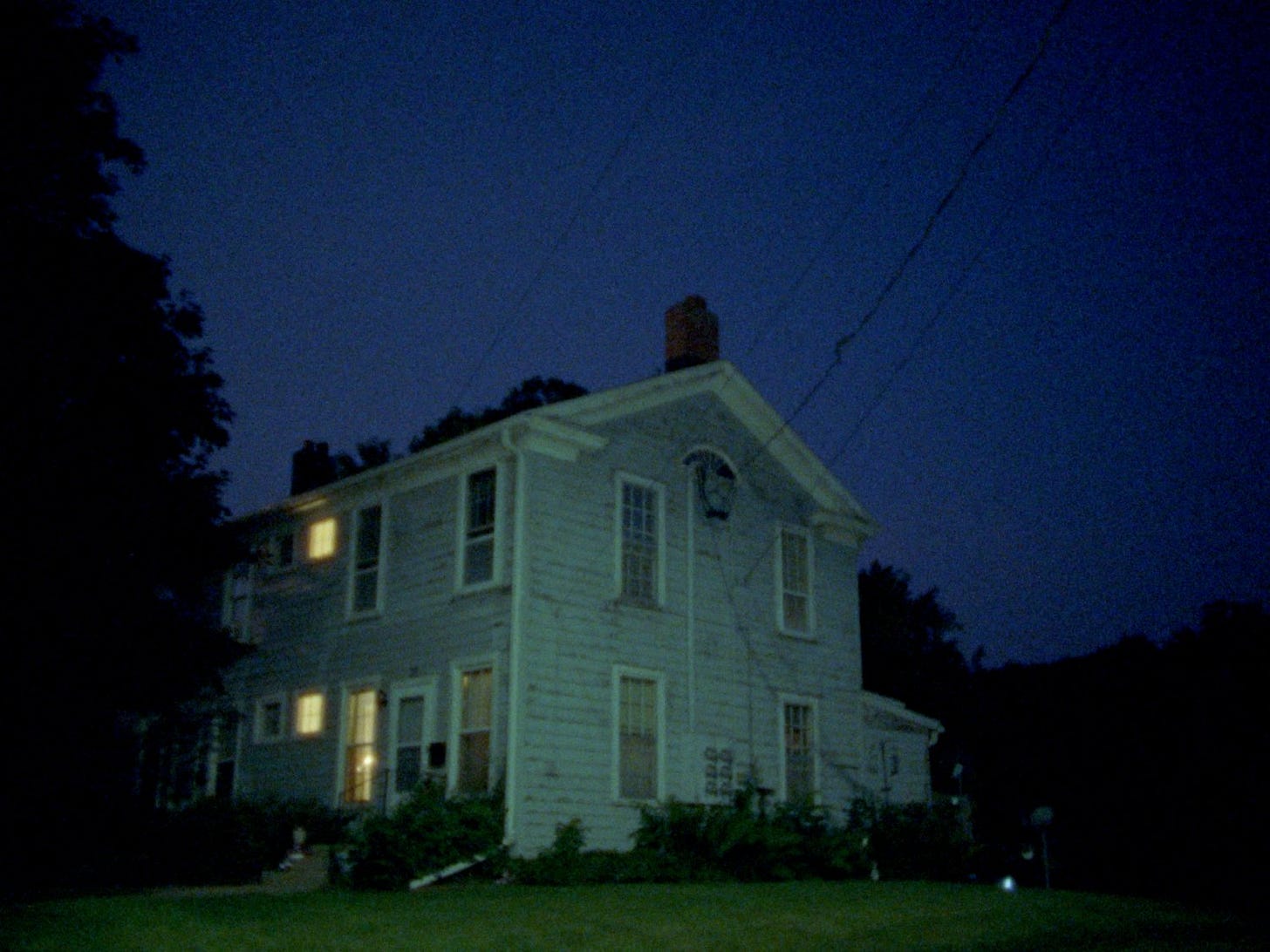Over the coming weeks, I will be writing about some films which I enjoyed at the Moviate Underground Film Festival in May 2025.
The Phalanx, a 14 minute film by Ben Balcom, is a portrait of Ceresco, the site of a 19th century utopian commune in Ripon, Wisconsin. Ceresco was one of many American communes inspired by French philosopher Charles Fourier, who called his idealized, proto-socialist communities phalanxes. The film opens with a series of intertitles highlighting some of Fourier’s wackier utopian notions: a future where animals peacefully co-exist with gentle, loving people, and global warming fosters a fruitful climate where seawater tastes like lemons. Fourier’s vision of a future peaceable kingdom reads more like poetry than like a philosophical tract. He was born in 1772, and shares with many of the children of the revolution (and the next generation) a passion to re-design the world into a perfected form, combining an Age of Enlightenment embrace of science and rational planning with a pantheistic, libidinal drive for liberation. (Think of Shelley’s utopian outbursts in Prometheus Unbound.)
In the wake of the disastrous failure of the Revolution, some clung to their utopian dreams, while some cynically embraced the trappings of power of the new emperor, craving the stability and structure of the old order, even while the people’s mystical belief in the divine right of kings had been permanently ruptured. By the time we get to the 20th century, particularly between the two World Wars, all previous value systems dissolved, leaving the vague, uneasy sensation of floating free and unmoored, unable to find one’s way, which became the condition of modernism. It is now 60 years since the last burst of American enthusiasm for creating utopian communities, and once again the sense of rudderlessness, of the ruthless destruction of all nourishing social structures, with nothing to replace them except for a dehumanized future of digital surveillance, hangs heavily over us. It is this atmosphere which Balcom effectively captures in his sparse, understated film portrait, which elicits a wistful nostalgia for the simpler, idealized vision of a better life which people once believed in, and a sense of hopeless dismay at how quickly these ideals fell apart, in a matter of four years. Balcom’s shots of Ripon today are artfully framed to emphasize the deserted streets, shuttered businesses, bars nearly empty of patrons. In this shattered world, where life, abundance, and thriving community have been largely snuffed out, we feel ourselves at an almost unbearable distance from the idealism of the past. Ripon is America’s future, and it’s not a happy one.
We see old photos of Ceresco, from the time of the commune, alongside footage of the site as it stands today, surrounded by lush, uncultivated fields. (The original longhouse is now an apartment building.) During these sequences, we hear more of Fourier’s ecstatic visions of the future, until the narrator’s voice becomes suddenly drowned out by a loud buzzing sound. A sudden blackout announces that we are snapping out of the utopian daydream, into the daily reality of trying to make a life within a community of equals.
We watch detailed panning close shots of elements of the longhouse as it exists now: a chimney, a window sealed with plastic, a pile of firewood outside. We start to hear excerpts from letters written by commune members. At first, they are full of enthusiastic hope, describing the abundant harvest. Gradually, we begin to hear about the breakdown of the group’s social bonds: loneliness, isolation, members preferring to eat privately, rather than at the communal table.
Balcom introduces a fascinating expressive element to his portrait of the commune: a group of performers. We see fleeting images of people, disappearing around corners, hurrying down a hallway. Sometimes we see them engaged in conversation, or helping someone who has collapsed, but mostly we see them avoiding one another, hurrying out of sight. A door closes, with a sad creak. These simple movements, fleetingly glimpsed, compliment the stories of social alienation we are hearing from the letters of the communards.
“How long has it taken me to realize that there is no lesson to be learned here?” So says one of the members, overcome with disillusionment with the community’s founding ideals. We suddenly see fast motion footage of a nighttime scene in Ripon, the camera shaking wildly, the traffic and street lights tracing crazy squiggles in the air. The foundations have fallen out from under the experiment in communal living, leaving a terrifying sense of directionlessness.
When contemplating the history of American intentional communities, both the wave of communes from the 19th century and those from the 1960s, one has to ask why they almost always fall apart quickly. What personal qualities are needed to build a sustainable communal life? A sense of humor and proportion. Compassion, and a willingness to forgive. High tolerance for difference, especially difference of opinion and belief. A willingness to compromise, in the spirit of finding pathways which everyone is comfortable with. Are these qualities simply lacking in American culture, among aspiring communards, all of whom have been raised in a capitalist, consumerist, individualist culture? It is also worth taking a close look at those exceptions to the rule, those few communes that have survived and thrived for decades, such as Twin Oaks or Short Mountain Sanctuary, as well as successful 19th century communes such as the Shakers.
In the film’s closing sequence, these squiggling lights erupt into a crazy, wild dance, creating a largely abstract effect, a graffiti of neon-colored scrawls, erupting over the night sky. We hear a distant celestial singing, like a Shaker hymn being sung in a church 5 miles away. The dizzy light show somehow simultaneously suggests the chaos that was unleashed in the minds of commune members, as their old ideals fell apart, and also those very ideals, the golden, glowing harmonious future that they wanted to build.
The Phalanx makes no overtly didactic points and delivers no history lessons, deriving its power solely from Balcom’s photography, his precise, sensitive editing and his judicious use of textual collage, electronic sounds, and performers. The film is permeated with an overwhelming atmosphere of sadness, dismay, grief over the loss of something which was likely illusory in the first place. This elusive sadness forms the air of our current world, and The Phalanx gives visible form to this unarticulated grief.
My articles on experimental film are freely available to all, but are supported by monthly and annual donations from readers. Please consider becoming a paid subscriber to support my work. Thank you.







